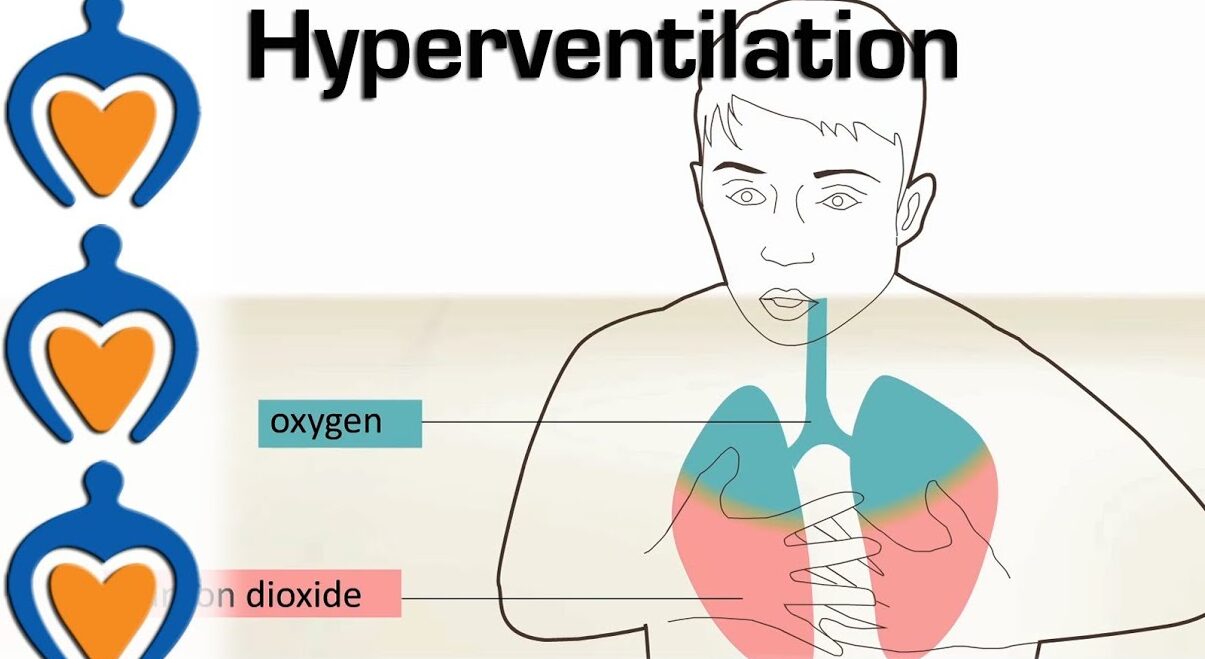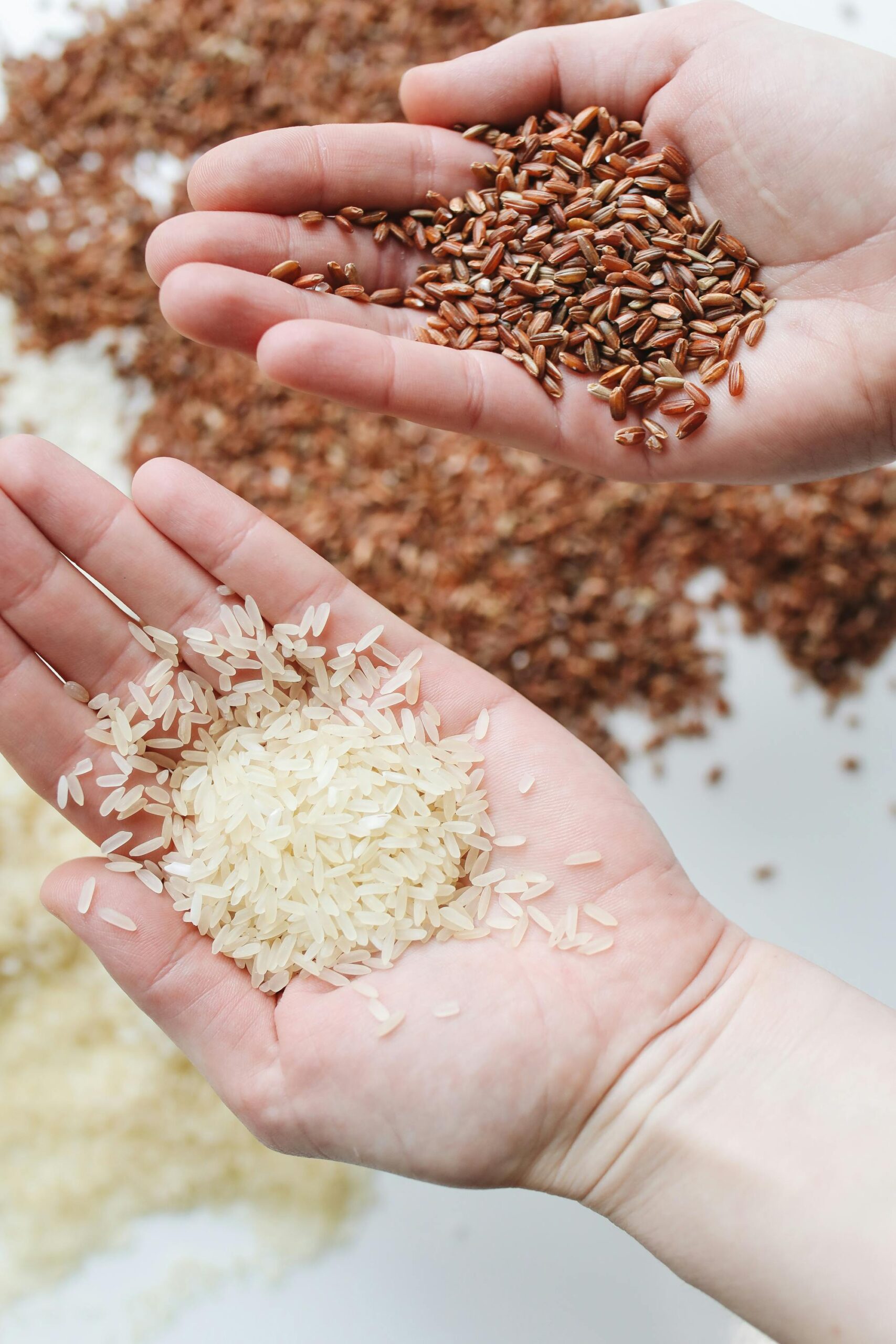Health
Understanding Hyperventilation Syndrome: Causes, Symptoms, and Treatment Options

Are you feeling anxious? Short of breath? Maybe even a little lightheaded? If so, you might be experiencing hyperventilation syndrome. Don’t worry, though – understanding this condition is the first step towards finding relief and regaining control. In this blog post, we’ll dive into everything you need to know about hyperventilation syndrome: what it is, common causes, symptoms to look out for, how it’s diagnosed, and most importantly treatment options that can help bring you back to a state of calm. So take a deep breath (but not too deep!) and let’s explore the world of hyperventilation syndrome together!
What is Hyperventilation Syndrome?
Hyperventilation syndrome is a condition characterized by rapid and shallow breathing, often caused by excessive anxiety or stress. When we’re in a state of panic or high emotional arousal, our body goes into overdrive and starts taking in more oxygen than it actually needs. This disrupts the balance of carbon dioxide in our bloodstream and can lead to a range of uncomfortable symptoms.
During hyperventilation, the levels of carbon dioxide decrease, which affects blood pH levels and can cause dizziness, tingling sensations, chest tightness, and even fainting. It’s important to note that hyperventilation syndrome is not the same as having difficulty breathing due to an underlying medical condition such as asthma or chronic obstructive pulmonary disease (COPD). Instead, it’s a response triggered by emotional factors rather than physical ones. Understanding this distinction is crucial for finding effective ways to manage the symptoms and regain control over your breath.
Common Causes of Hyperventilation Syndrome
Hyperventilation Syndrome can occur for a variety of reasons. One common cause is anxiety or panic attacks. When someone feels overwhelmed or stressed, their body’s natural response may be to breathe rapidly and shallowly, leading to hyperventilation. Another cause can be physical exertion or strenuous exercise. During intense workouts, the body demands more oxygen, causing rapid breathing that can trigger hyperventilation.
In addition, certain medical conditions such as asthma, chronic obstructive pulmonary disease (COPD), and heart disease can also contribute to hyperventilation syndrome. These underlying health issues affect respiratory function and may lead to irregular breathing patterns that result in excessive inhalation and exhalation.
Understanding the potential causes of hyperventilation syndrome is crucial in managing this condition effectively. By identifying the factors triggering hyperventilation episodes, individuals can take steps towards preventing future occurrences and seeking appropriate treatment options based on their specific circumstances.
Symptoms of Hyperventilation Syndrome
Hyperventilation Syndrome can manifest in a wide range of symptoms, making it important to recognize the signs and seek appropriate treatment. One common symptom is rapid breathing or feeling like you can’t catch your breath, even when at rest. This can lead to dizziness, lightheadedness, and a tingling sensation in the extremities.
Other symptoms may include chest tightness or pain, heart palpitations, and a sense of impending doom. Some individuals may also experience muscle tension and spasms, as well as headaches or migraines. These symptoms can be frightening and overwhelming but understanding their connection to hyperventilation syndrome is key to finding relief.
If you’re experiencing these symptoms on a regular basis or they become severe enough to interfere with your daily life, it’s important to consult with a healthcare professional for an accurate diagnosis and appropriate treatment options. Remember that seeking help early on can lead to effective management of hyperventilation syndrome and improve your overall quality of life.
Diagnosing Hyperventilation Syndrome
Diagnosing Hyperventilation Syndrome can be a challenging task, as its symptoms overlap with various other medical conditions. However, healthcare professionals have certain methods to help identify this syndrome.
They will conduct a thorough physical examination and review the patient’s medical history. They may also ask about any recent stressful events or anxiety triggers. Additionally, doctors may perform blood tests to rule out other possible causes of the symptoms.
Furthermore, they might use specialized breathing tests to measure carbon dioxide levels in the bloodstream and assess how efficiently oxygen is being delivered throughout the body. These diagnostic tools aid in determining if hyperventilation syndrome is indeed present and guide healthcare providers in developing an appropriate treatment plan tailored to each individual’s needs.
Treatment Options for Hyperventilation Syndrome
One of the key approaches to managing hyperventilation syndrome is through breathing techniques and relaxation exercises. These can help regulate your breathing and reduce the frequency and intensity of symptoms. Deep diaphragmatic breathing, also known as belly breathing, can be especially effective in calming your body down.
In addition to these techniques, medications may be prescribed by a healthcare professional to help alleviate symptoms. Medications such as sedatives or anti-anxiety drugs may be used on a short-term basis to provide relief during acute episodes. However, it’s important to note that medication should not be relied upon as a long-term solution.
Cognitive-Behavioral Therapy (CBT) is another treatment option that has shown promise in managing hyperventilation syndrome. This therapy focuses on identifying triggers and learning coping strategies to manage stress and anxiety effectively. By addressing the underlying psychological factors contributing to hyperventilation syndrome, CBT aims to break the cycle of excessive breathing patterns.
Remember that it’s essential to consult with a healthcare professional before starting any treatment plan for hyperventilation syndrome. They will guide you towards the most appropriate options based on your individual needs and circumstances.
Breathing Techniques and Relaxation Exercises
Breathing Techniques and Relaxation Exercises can be beneficial in managing Hyperventilation Syndrome. These techniques focus on regulating your breathing patterns, helping you to slow down and control your breaths. One effective technique is diaphragmatic breathing, where you consciously breathe deeply into your belly rather than shallowly into your chest. This helps to activate the body’s relaxation response and decrease feelings of anxiety or panic.
Another helpful technique is pursed lip breathing, which involves inhaling through the nose and exhaling slowly through pursed lips as if blowing out a candle. This encourages a longer exhalation, which can reduce hyperventilation symptoms such as dizziness or lightheadedness.
Practicing relaxation exercises like progressive muscle relaxation or guided imagery can also aid in reducing stress levels and promoting overall calmness. These exercises involve tensing and releasing different muscle groups or visualizing peaceful scenes to help relax both body and mind.
finding what works best for you may take some trial and error. It’s essential to practice these techniques regularly so that they become second nature when experiencing symptoms of Hyperventilation Syndrome. By incorporating these simple yet powerful strategies into your daily routine, you can regain control over your breathing patterns and manage hyperventilation more effectively.
Medications for Hyperventilation Syndrome
Medications for Hyperventilation Syndrome can be a helpful tool in managing symptoms and providing relief. There are several types of medications that may be prescribed, depending on the individual’s specific needs.
One common medication used is benzodiazepines, which help to reduce anxiety and promote relaxation. These medications work by slowing down the central nervous system, helping to calm excessive breathing patterns. Another option is selective serotonin reuptake inhibitors (SSRIs), which are commonly used to treat anxiety and depression. SSRIs can help regulate mood and reduce hyperventilation episodes.
It’s important to note that medication should always be used under the guidance of a healthcare professional, as they will assess your unique situation and determine what type of medication may be most effective for you. Additionally, it’s crucial to remember that medication alone is not a cure for Hyperventilation Syndrome but can be an effective part of a comprehensive treatment plan alongside other techniques such as breathing exercises and therapy.
Cognitive-Behavioral Therapy (CBT)
Cognitive-Behavioral Therapy (CBT) is a widely recognized and effective treatment option for individuals with Hyperventilation Syndrome. This therapy focuses on identifying and challenging negative thought patterns that contribute to hyperventilation episodes.
In CBT, therapists work closely with patients to help them develop coping strategies and relaxation techniques that can be used when symptoms arise. By addressing the underlying anxiety or stress that often accompanies hyperventilation, CBT aims to reduce the frequency and severity of episodes over time. Through guided discussions and practical exercises, individuals learn how to reframe their thoughts and behaviors in order to regain control over their breathing.
CBT has shown promising results in helping people manage Hyperventilation Syndrome by targeting both the physical symptoms and emotional factors involved. It empowers individuals with tools they can utilize outside of therapy sessions, promoting long-term symptom relief and improved quality of life.
Preventing Hyperventilation Syndrome
Preventing Hyperventilation Syndrome is crucial for those who have experienced it before or are at risk. One of the most effective ways to prevent hyperventilation is through proper breathing techniques and relaxation exercises. By practicing deep, diaphragmatic breathing and focusing on slow exhalation, you can regulate your breath and avoid hyperventilating.
Another important aspect of prevention is identifying triggers that may lead to hyperventilation episodes. These triggers can vary from person to person but may include stress, anxiety, certain medications, or even environmental factors such as strong odors or extreme temperatures. By recognizing these triggers and finding ways to manage them effectively, you can significantly reduce the likelihood of experiencing a hyperventilation episode.
Fashion
Aquaphor as Lube: What You Need to Know Before Trying It

Introduction
Aquaphor has long been a staple in many households, known for its ability to soothe and protect dry, irritated skin. But a new curiosity has emerged: can this versatile ointment double as an intimate lubricant? This question has sparked interest among those looking for multipurpose products and alternatives to specialized lubricants. In this article, we will explore the feasibility of using Aquaphor as lube, its safety implications, and what you should consider before making this decision.
Understanding Aquaphor
What is Aquaphor?
Aquaphor is an ointment produced by Eucerin, primarily designed to relieve and protect dry, chapped skin. Its formulation includes a blend of petrolatum, mineral oil, and other emollients that create a barrier on the skin, which helps retain moisture and promote healing.
Key Ingredients and Their Functions
- Petrolatum: Acts as an occlusive agent to lock in moisture.
- Mineral Oil: Helps to soften and smooth the skin.
- Glycerin: A humectant that draws moisture from the environment into the skin.
Intended Uses and Benefits
Aquaphor is commonly used to treat conditions such as eczema, psoriasis, and minor burns. Its gentle formulation makes it a popular choice for sensitive skin areas, but it was never intended for use as a lubricant.
The Question: Can Aquaphor Be Used as Lube?
Common Misconceptions
Many people assume that if a product is good for skin, it must be good for all skin-related uses, including lubrication. However, just because Aquaphor is beneficial for skin care doesn’t mean it’s suitable for intimate areas.
Why People Consider Using Aquaphor as Lube
The idea of using Aquaphor as a lubricant likely stems from its smooth texture and moisturizing properties. People looking for alternatives to commercial lubricants might see Aquaphor as a readily available option.
Overview of Popularity and Curiosity
Curiosity about using Aquaphor as lube reflects a broader trend of seeking multipurpose products and exploring non-traditional uses for everyday items.
Safety Considerations
Ingredient Safety for Intimate Areas
Aquaphor’s ingredients are designed for external skin use and might not be suitable for intimate areas. Petrolatum and mineral oil, while safe for skin, may cause irritation or disrupt the natural balance of sensitive areas.
Potential Risks and Reactions
Using Aquaphor as a lubricant may lead to allergic reactions or infections. The product is not formulated to be used internally and might not provide the same safety and comfort as specialized lubricants.
Hygiene and Sterility Concerns
Aquaphor is not a sterile product, and using it in intimate areas could introduce bacteria or pathogens, increasing the risk of infections. Specialized lubricants are designed with sterility and safety in mind.
Comparing Aquaphor with Specialized Lubricants
Water-Based Lubricants
Water-based lubricants are a popular choice due to their compatibility with condoms and sex toys. They are easy to clean up and generally safe for sensitive skin. Look for products without parabens or glycerin for a more natural option.
Silicone-Based Lubricants
Silicone-based lubricants provide long-lasting lubrication and are water-resistant, making them suitable for various activities. However, they may degrade silicone toys and require careful cleaning.
Oil-Based Lubricants
Natural oils like coconut oil can be used for external lubrication but should not be used with latex condoms, as they can weaken the latex. Oil-based lubes are not recommended for internal use.
Pros and Cons of Using Aquaphor as Lube
Benefits
- Moisturizing Properties: Aquaphor’s ability to hydrate the skin might offer some level of lubrication.
- Availability: Easily accessible in many households.
Drawbacks and Limitations
- Potential Irritation: Not designed for intimate areas, may cause irritation.
- Lack of Sterility: Increases risk of infections.
- Texture Issues: May not provide adequate or lasting lubrication.
Alternatives to Aquaphor for Intimate Lubrication
Best Water-Based Lubricants
- K-Y Jelly: A well-known brand for its gentle formulation.
- Sliquid H2O: Offers a natural, glycerin-free option.
Top Silicone-Based Lubricants
- Pjur Original: Long-lasting and suitable for various activities.
- Astroglide X: Provides a smooth, extended glide.
Safe Natural Oils for Lubrication
- Coconut Oil: Hydrating and naturally antimicrobial but not compatible with latex condoms.
- Almond Oil: A mild, moisturizing option but should be used cautiously.
How to Choose the Right Lubricant
Factors to Consider
- Compatibility: Ensure the lubricant works with condoms and sex toys.
- Personal Sensitivities: Choose a product that suits your skin type and preferences.
Matching Lubricants to Needs and Preferences
Consider what type of activities you’ll be engaging in and choose a lubricant that offers the appropriate level of comfort and effectiveness.
Conclusion
While the idea of using Aquaphor as lube may be intriguing, it’s essential to prioritize safety and effectiveness. Aquaphor is not designed for intimate lubrication and may pose risks such as irritation or infection. Opting for specialized lubricants, whether water-based, silicone-based, or natural oils, ensures a safer and more comfortable experience. Always consider your health and well-being when choosing products for intimate use.
FAQs
What are the risks of using Aquaphor as lube?
Using Aquaphor as a lubricant can lead to irritation, allergic reactions, or infections due to its ingredients and lack of sterility.
Can Aquaphor cause infections or irritation?
Yes, Aquaphor may disrupt the natural balance of intimate areas and increase the risk of infections or irritation.
What are the best alternatives to Aquaphor for lubrication?
Water-based, silicone-based, and safe natural oil lubricants are better alternatives, each offering specific benefits and suitability for different needs.
How do water-based lubes compare to silicone-based lubes?
Water-based lubes are easier to clean and safe for most activities, while silicone-based lubes offer longer-lasting lubrication and are water-resistant.
Are natural oils a safe option for lubrication?
Natural oils like coconut oil can be used for external lubrication but should not be used with latex condoms, as they can weaken the latex.
Health
RAD-150: The Ultimate SARM for Strength and Muscle Gains

Introduction
What is RAD-150?
RAD-150, also known as a selective androgen receptor modulator (SARM), has been making waves in the fitness and bodybuilding communities. Unlike traditional anabolic steroids, RAD-150 is designed to selectively bind to androgen receptors in muscle and bone tissues, thereby promoting muscle growth and strength gains without some of the undesirable side effects associated with steroids.
Why RAD-150 Matters
The increasing interest in RAD-150 can be attributed to its unique benefits over other performance enhancers. Athletes and bodybuilders seek RAD-150 for its potential to enhance muscle mass, improve strength, and aid in fat loss while minimizing adverse effects on other body systems.
Understanding SARMs
What Are Selective Androgen Receptor Modulators (SARMs)?
SARMs are a class of compounds that, similar to anabolic steroids, target androgen receptors but with greater specificity. This specificity allows them to offer muscle-building benefits while avoiding some of the broader side effects typically associated with steroids.
How SARMs Work
SARMs like RAD-150 bind selectively to androgen receptors in specific tissues. This selective binding helps in promoting muscle growth and strength without affecting other parts of the body, making them a popular choice for those looking to enhance physical performance.
RAD-150 vs. Other SARMs
Comparing RAD-150 with RAD-140
RAD-150 and RAD-140 (Testolone) are often compared, as both are used to enhance muscle mass and strength. RAD-150 is noted for its improved binding affinity to androgen receptors, potentially offering more significant gains with fewer side effects.
Advantages Over Traditional Steroids
Compared to traditional anabolic steroids, RAD-150 is believed to have a better safety profile. It selectively targets muscle and bone tissue, potentially reducing risks associated with hormonal imbalances and other systemic issues.
Benefits of RAD-150
Enhanced Muscle Growth
RAD-150 is particularly noted for its ability to enhance muscle hypertrophy. Users often report significant gains in muscle size and strength, which makes it a sought-after supplement for bodybuilders and athletes.
Improved Strength and Performance
In addition to muscle growth, RAD-150 is reputed to improve strength and overall physical performance. This makes it beneficial for both athletes looking to gain a competitive edge and bodybuilders aiming for peak performance.
Fat Loss Support
RAD-150 may also aid in fat loss. Its muscle-building effects can boost metabolism, helping users burn more calories and reduce body fat.
Cycling RAD-150
Why Proper Cycling is Important
Cycling refers to the practice of using RA’D-150 in structured phases, alternating between periods of use and non-use. Proper cycling is crucial to maximize gains, maintain the compound’s effectiveness, and minimize potential side effects.
Typical RAD-150 Cycle
A typical RA’D-150 cycle might last 8-12 weeks, followed by a break period. This approach helps in preventing the body from adapting too quickly to the compound, which could diminish its effectiveness.
Post-Cycle Therapy (PCT)
Post-Cycle Therapy (PCT) is an essential component after completing a RA’D-150 cycle. PCT helps in restoring natural hormone levels and maintaining gains achieved during the cycle.
Dosage and Administration
Recommended Dosage
The recommended dosage for RA’D-150 varies depending on individual goals and experience. However, a common dosage range is between 10-20 mg per day. Starting with a lower dose and gradually increasing is often recommended to assess tolerance.
Administration Tips
RA’D-150 is usually administered orally in the form of a liquid or capsule. Consistency in taking the compound, along with proper cycling and dosage, is key to achieving the desired results.
Side Effects and Safety
Potential Side Effects
While RA’D-150 is considered safer than traditional steroids, it can still cause side effects. Common side effects may include changes in hormone levels, potential liver strain, and mood changes. It’s important to monitor these effects and consult with a healthcare provider.
Safety Precautions
To ensure safety while using RAD-150, adhere to recommended dosages, cycle appropriately, and undergo regular health check-ups. Staying informed about potential risks and addressing them promptly is crucial.
Legal and Regulatory Status
Is RA’D-150 Legal?
The legality of RA’D-150 varies by country. In many places, it is classified as a research chemical and is not approved for human consumption. Users should be aware of their local regulations and ensure compliance to avoid legal issues.
Regulations and Compliance
Understanding and adhering to regulations related to SARMs is essential for both legal and health reasons. It’s important to purchase RA’D-150 from reputable sources and to stay updated on regulatory changes.
Expert Insights and Testimonials
What Experts Say
Experts in the field of sports medicine and bodybuilding often discuss the benefits and risks of using SARMs like RA’D-150. Their insights can provide valuable information on how to use the compound effectively and safely.
User Experiences
Many users share their experiences with RA’D-150 in online forums and reviews. These testimonials can offer practical insights into the compound’s effectiveness and potential side effects.
Conclusion
RAD-150 offers significant benefits for muscle growth, strength enhancement, and fat loss. Proper usage and cycling are key to maximizing these benefits while minimizing side effects.
For those considering RAD-150, it’s important to weigh the benefits against potential risks. Consulting with healthcare professionals and adhering to recommended practices can help in achieving optimal results.
FAQs
What is RA’D-150 used for?
RA’D-150 is used to enhance muscle growth, strength, and performance, and may also support fat loss.
How long should a RA’D-150 cycle last?
A typical RA’D-150 cycle lasts between 8-12 weeks, followed by a break period.
Are there any common side effects of RA’D-150?
Common side effects may include changes in hormone levels, potential liver strain, and mood changes.
Is RA’D-150 legal?
The legality of RA’D-150 varies by country. It is often classified as a research chemical and may not be approved for human consumption in some regions.
What is Post-Cycle Therapy (PCT)?
Post-Cycle Therapy (PCT) is a regimen used after completing a RA’D-150 cycle to help restore natural hormone levels and maintain gains.
Health
The Rice Purity Test: A Deep Dive into Its Significance and Impact

The Rice Purity Test: A Deep Dive into Its Significance and Impact :
The Rice Purity Test has become a cultural phenomenon, particularly among college students and young adults. But what exactly is this test, and why has it garnered so much attention.The Rice Purity Test is a self-assessment survey consisting of 100 questions that cover various aspects of personal behavior, ranging from innocent activities to more risqué experiences. Participants mark the activities they have not engaged in, resulting in a “purity score” out of 100, where a higher score indicates a higher level of innocence.
Brief History of the Rice Purity Test :
Originally created by students at Rice University in Houston, Texas, the Rice Purity Test was intended as a fun way to bond with peers and initiate conversations about life experiences. Over the years, it has evolved and spread beyond college campuses, becoming a popular tool for self-reflection and social interaction.
Understanding the Rice Purity Test :
Purpose and Origins
The primary purpose of the Rice Purity Test is to provide a light-hearted way for individuals to reflect on their life experiences and compare them with those of others. While it started as a collegiate tradition, its appeal has broadened due to the rise of social media and the internet.
Who Takes the Rice Purity Test?
While initially popular among college students, the Rice Purity Test is now taken by a diverse range of people. High school students, young adults, and even older individuals participate out of curiosity or for nostalgic reasons.
How to Take the Test
The test is available online on various websites. Participants answer “yes” or “no” to each question, and the total number of “no” responses determines the purity score. The process is straightforward and can be completed anonymously.
Categories of Questions
The Rice Purity Test covers a wide range of topics, divided into several categories:
Social and Personal Conduct
Questions in this category assess general behavior in social settings, such as attending parties, making prank calls, or pulling an all-nighter.
Sexual Behavior
These questions delve into romantic and sexual experiences, from first kisses to more intimate encounters.
Substance Use
Participants are asked about their use of alcohol, tobacco, and drugs, reflecting their experiences with substance consumption.
Academic and Legal Issues
This category includes questions about cheating on tests, getting arrested, or facing other legal troubles.
Relationship Dynamics
Questions here explore the complexities of relationships, including dating, breakups, and unrequited love.
High Scores vs. Low Scores
A high score signifies a more sheltered or cautious lifestyle, while a low score suggests a willingness to explore and take risks. Neither score is inherently good or bad; they simply reflect different life paths.
What Your Score Says About You
Your score can offer insights into your personality and life choices. It might indicate your openness to new experiences, your adherence to societal norms, or your adventurous spirit.
Cultural Impact of the Rice Purity Test
Popularity in Colleges and Universities
The test remains a staple on college campuses, often used during orientation weeks or dormitory bonding sessions. It serves as an icebreaker and a way to foster community spirit.
Influence on Social Media
The Rice Purity Test has seen a resurgence on platforms like TikTok, Instagram, and Twitter, where users share their scores and reactions, sometimes leading to viral trends.
Rice Purity Test Memes
The humorous and sometimes absurd nature of the questions has spawned a variety of memes, adding to the test’s appeal and reach.
Psychological Perspectives
Why People are Fascinated by Purity Tests
Purity tests tap into our curiosity about ourselves and others. They provide a structured way to reflect on personal experiences and can spark interesting conversations.
The Impact on Self-Perception
Taking the test can influence how individuals view their own behaviors and decisions, sometimes leading to introspection or even changes in behavior.
Comparing Scores with Friends
Comparing scores with peers can be a fun and enlightening activity, highlighting similarities and differences in life experiences and fostering deeper connections.
Criticisms and Controversies
Privacy Concerns
Sharing purity test scores can lead to privacy issues, especially if individuals feel pressured to disclose personal information.
Potential for Misinterpretation
The simplicity of the test can lead to misunderstandings about what the scores truly represent, potentially resulting in judgment or stigma.
Ethical Considerations
There are ethical concerns regarding the pressure to conform or the potential for shaming based on test results. It’s important to approach the test with a healthy mindset.
Modern Adaptations and Alternatives
Updated Versions of the Rice Purity Test
Newer versions of the test include updated questions that reflect contemporary societal norms and issues, making them more relevant to today’s participants.
Other Popular Online Purity Tests
There are many other purity tests available online, each with its own unique focus and set of questions, catering to different audiences and interests.
The Future of Online Quizzes
As technology and social norms evolve, online quizzes like the Rice Purity Test will likely continue to adapt, offering fresh ways to explore personal and social behaviors.
Taking the Rice Purity Test Responsibly
Tips for a Healthy Perspective
Remember that the test is meant to be fun and reflective, not a definitive judgment of character. Use it as a tool for self-exploration, not self-criticism.
Discussing Your Results
If you choose to share your results, do so with people you trust and who will respect your experiences without judgment.
Avoiding Peer Pressure
It’s important to take the test at your own pace and comfort level. Don’t let peer pressure influence your answers or your feelings about your score.
The Role of Purity Tests in Self-Discovery
Using the Test for Personal Insight
The questions can prompt self-reflection on past decisions and future goals, helping you understand yourself better.
Growth and Maturity Reflected in Scores
As people mature, their scores may change, reflecting their evolving life experiences and perspectives.
Embracing Your Results
Whether your score is high or low, embrace it as part of your unique journey. Use it as a starting point for personal growth and understanding.
How to Discuss Purity Tests in Relationships
Conversations with Partners
Discussing purity tests with a partner can open up meaningful conversations about values, experiences, and boundaries.
Navigating Different Scores
Different scores can lead to differences in experiences and perspectives. Use these differences to learn from each other and build a stronger relationship.
Building Understanding and Respect
Respect each other’s histories and choices. A purity test score is just one aspect of who you are.
Fun Facts About the Rice Purity Test
Strange and Interesting Questions
Some questions on the test are quirky and unexpected, adding to the fun and intrigue of taking it.
Unexpected Trends in Scores
Scores often vary by region, culture, and age group, revealing interesting trends and patterns.
Celebrity Purity Scores
There’s a playful curiosity about how celebrities might score, though these are purely speculative and part of the fun.
Resources for Further Exploration
Books and Articles on Purity and Self-Assessment
There are numerous resources available for those interested in deeper exploration of purity, self-assessment, and related psychological concepts.
Online Communities and Forums
Joining online communities can provide support and shared experiences, enhancing your understanding and connection with others who have taken the test.
Psychological Research on Purity Tests
Academic studies on purity tests and their effects can offer valuable insights into their psychological and social implications.
Conclusion
The Rice Purity Test, with its blend of fun and introspection, remains a popular tool for self-discovery and social connection. Whether you take it for entertainment or insight, it offers a unique window into your life experiences and those of others.
-

 Fashion2 years ago
Fashion2 years agoExploring Purenudism: Embracing Body Positivity and Freedom
-

 Shops1 year ago
Shops1 year agoStaples Store Hours: What Time Does Staples Open And Close?
-

 Shops1 year ago
Shops1 year agoWalgreen Pharmacy Hours: What Time Does It Open & Close?
-

 Shops2 years ago
Shops2 years agoWalmart Vision Center Hours
-

 Shops1 year ago
Shops1 year agoPublix Pharmacy Hours and Locations
-

 Business2 years ago
Business2 years agoDesigner Clothing: Making a Statement
-

 Shops1 year ago
Shops1 year agoWalmart Deli Open & Close Hours
-

 Entertainment2 years ago
Entertainment2 years agoRoku Red, White, and Blue: Streaming the cultural heart of America
